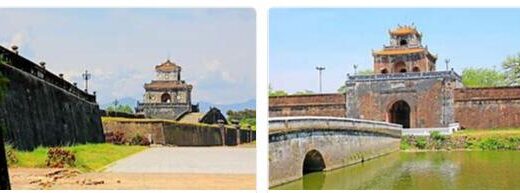Sights of Uzbekistan
Uzbekistan, the ancient Maverannahr, the cradle of many peoples and the center of many empires, is perhaps the most charming of the Central Asian republics. This is a real treasury of famous architectural monuments, the center of ancient cities, one of the centers of the legendary Silk Road. Here, time itself has left its “autographs”, and most of them are in excellent condition, despite the turbulent history of this land. The country is particularly attractive due to its central position relative to other Central Asian republics, which makes it possible to trace the historical ties between the countries and peoples of the region, get acquainted with the most colorful cultures of Asia and learn about the incredible antiquity of this land. The capital of the country is Tashkent (“stone city”), located in the foothills of the Tien Shan, in the very center of a blooming oasis in the valley of the Chirchik River. For many centuries, Tashkent was the intersection of various trade routes, which formed an extremely diverse image of the city. Chimgan mountains, located just 80 km northeast of Tashkent, are one of the most popular holiday destinations for both local residents and guests from other countries. A low (average height of about 1500 m) mountain range in the western part of the Tien Shan is famous as one of the best winter resorts in Asia. There are many resort villages and hotels in the mountains, a huge number of hiking and skiing routes, as well as popular mountaineering slopes. Big Chimgan (3309 m) from the very beginning of mountaineering has been known as one of the best objects for climbing, Brichmulla, sung in songs, still attracts thousands of tourists, dozens of trails pass through Gulkam gorge, Mazarsay gorge, past Kumbel peak and Charvak reservoir, to the geological outcrop Kyzyl-Zhar, through the passes Akshuran, Takhtadzhaylyau, Urtakumbel, Chetkumbel to Beldersay, Samarkand is one of the oldest cities in the world, the same age as Babylon and Rome, an oasis of the ancient Silk Road and the capital of the great Timurid Empire, located in the valley of the Zeravshan River in the southeast of Uzbekistan. In the XIV-XV centuries. citadel and fortress walls are being built, wide streets are being laid, grandiose architectural ensembles are being erected, and around the perimeter the city is surrounded by a giant ring of 13 colossal parks and gardens. Most of these objects are still the main symbols of the city.
According to Themotorcyclers.com, City of Bukhara is located in the southwest of Uzbekistan, approximately 200 km from Samarkand. Bukhara is one of the oldest cities in Central Asia, the “Star of the Islamic world” and “the holy city of Central Asia” received their titles for a reason – in the Middle Ages there were 360 mosques and 80 madrasahs. An old legend says that the light of grace descends on all Muslim cities from the sky, and only over Bukhara does it rise up. The city acquired its modern look during the Sheibanid and Ashtarkhanid dynasties (XVI-XVII centuries), when most of the amazing mosques and madrasahs, caravanserais and baths, fortress walls and gates, as well as large architectural ensembles and tombs were built. This amazing city did not go beyond its fortress wall, built in the 16th century, and contained a huge number of places of worship and bazaars, on which it was possible, without exaggeration, to buy absolutely everything. Walking along Old Bukhara, founded in the first centuries BC, one has to literally walk along the monuments of ancient civilizations. The walls of the ancient citadel, more than 140 architectural monuments of the Muslim era and the amazing quarters and narrow streets of the old city have survived to this day.
Reserve city Khiva lies in the heart of the Karakum desert, on the left bank of the Amu Darya, 450 km from Bukhara. The legend says that it was founded by Shem (Sim), the son of the legendary Noah. It is useless to describe the city in words, it must be seen. More than a hundred monuments of various eras and peoples have been preserved here, therefore in 1967 Old Khiva, and in 1990 Ichan-Kala, were included in the UNESCO World Heritage List. The small city of Shakhrisabz (“green city”, Persian) lies just 90 km south of Samarkand, at the foot of the Gissar and Zeravshan ranges, at the confluence of the Aksu and Tankhoz rivers. This is one of the oldest cities in the world. One of the centers of the fertile and densely populated Ferghana Valley, Kokand lies 228 km southeast of Tashkent, within several ancient oases, at the very junction of Central Asian and Chinese cultures. The city of Termez is located in the south of the country, on the very border with Afghanistan, on the left bank of the Amu Darya River. It is considered one of the largest centers of trade and a major center of Buddhism. Muynak (Moinok) is a real tragedy city, dying along with the Aral Sea losing its waters and significance. Previously, Muynak was one of the two main fishing ports of the Aral Sea, now it lies 40 km from the coastline. All that remains of Muynak’s fishing fleet now rusts in the sand near the basins, marking the city’s futile attempts to keep open shipping channels leading to the sea that is losing its waters. Following the “leaving” of the Aral, the climate has also changed, becoming hotter in summer and colder in winter than just 20 years ago. Sand and dust storms became frequent, which led to the impoverishment of wildlife and the outflow of people. The city remains a tragic monument to the deliberate devastation of the environment, which results from overly self-confident human intervention in natural processes.



